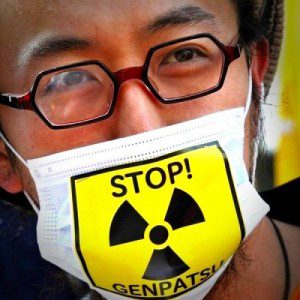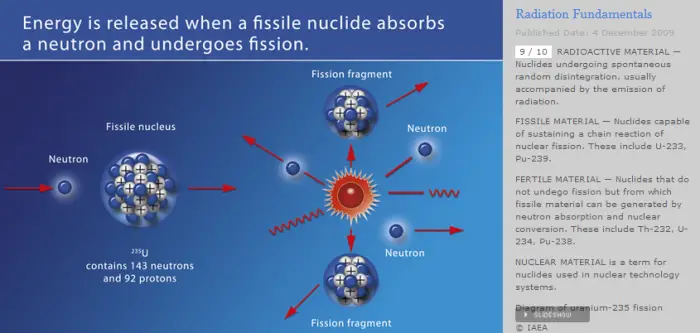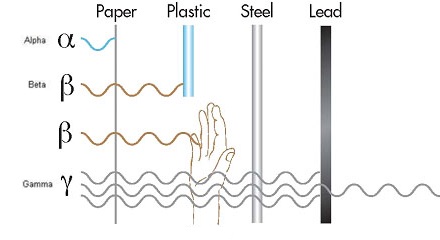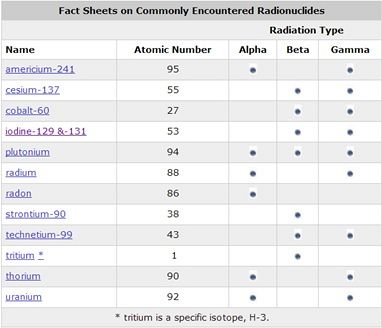By Capt. Graham Bates
Guest Writer for Wake Up World
There’s been a spike of thyroid cancer cases in the Fukushima, like there was in Chernobyl after its nuclear disaster. And like Chernobyl, the nuclear industry is trying to deny the events are related.
On 11 March 2011, the world witnessed another Nuclear Power Plant (NPP) disaster, this time involving the Fukushima Daiichi nuclear power plant in Japan. An earthquake, followed by a tsunami, created the worst nuclear disaster on Earth.
The mainstream media has been relatively quiescent about the continuing Fukushima disaster. This is about to change.
Massive amounts of toxic radionuclides and water continue leaking from the reactors and the Spent Fuel Storage Pools (SFSP) into the Pacific Ocean. Scientific studies prove that radiation-induced insect mutations, high radiation levels in fish and alarmingly, rates of human cancers are increasing.
[pro_ad_display_adzone id=”110028″]
In the aftermath of the Fukushima NPP explosions, the extent of the massive damage is almost beyond belief.
Radioactive Isotopes Created by Fission
Nuclear Power Plants (NPPs) operate when the neutron decay of Uranium-238 (238U) and Uranium-235 (235U) undergoes a fission reaction where atoms are split within the fuel rods contained inside the reactor.
Thus begins the fission chain reaction used to create energy ⇒ heat water to steam ⇒ drive turbines ⇒ create electricity ⇒ distribute to the electrical grid:
A single neutron strikes the fissile atom (nucleus), splitting the 235U and 238U atoms into fragments and the fission reaction starts. The fuel type used in Units 1,2,4,5 and 6 at Fukushima was Low Enriched Uranium (LEU) that contains approx 3-4% 235U mixed in with 238U.
Unit 3 was using a blend of mixed-oxide (MOX) fuel with approximately 6% plutonium, 239Pu. The reactor core contents (radionuclides) create 3 different types of radiation. This radiation is dangerous to all living organisms and the only protection from alpha, beta and gamma radiation is achieved as follows:
These materials only offer protection for external radiation. However, when people breathe, drink, eat or wear clothes contaminated with radionuclides there is no protection. The fission fragments end up forming the following common radionuclides:
The most dangerous radionuclides are tritium, caesium, iodine and strontium, because they are absorbed by our bodies.
The absorption of radionuclides is dangerous to us all.
They are immensely dangerous to children due to their rapid growth rates. This significantly increases trace-element uptake. This is where chemistry + physics + biology all interact to absorb reactor meltdown products.
Radionuclides ⇒ dispersed ⇒ air, water and soils ⇒ plants, birds, fish and animals ⇒ food chain ⇒ human absorption ⇒ contamination within organs and tissues ⇒ replacement of trace elements in our anatomy ⇒ effects on physiology ⇒ mutations, cancer and death.
- Tritium (radioactive H-3) — water contaminant: Half-life = 12 years
- Caesium-137 — like potassium, is absorbed by muscles: Half-life = 30 years
- Iodine-131 — is absorbed by the thyroid: Half-life = 8 days
- Strontium-90 — like calcium, absorbed by bones/teeth: Half-life = 29 years
(To calculate the time for a return to safe radiation levels, multiply the half-life by a factor of 10.)
Today at Fukushima, the nuclear fission reaction has escaped containment control. The fission process continues outside the reactors, underground and is producing all of these radioactive products (and more) with unstoppable air and sea plume releases.
The problem with radiation, says the EPA, is that it can kill cells in all living things and cause cancer:
The [U.S.] Environmental Protection Agency says, “Based on current scientific evidence, any exposure to radiation can be harmful or can increase the risk of cancer…. Radiation is a carcinogen. It may also cause other adverse health effects, including genetic defects in the children of exposed parents or mental retardation in the children of mothers exposed during pregnancy.
These findings are backed up by other agencies:
The [US] National Academy of Sciences, in its seventh book-length report The Biological Effects of Ionizing Radiation, concludes likewise. Committee member Herbert Abrams of Harvard said, “There appears to be no threshold below which exposure can be viewed as harmless.
Despite this supporting evidence, other agencies continue to deny the severity of these effects:
The [US] Department of Energy, which makes H-bombs and tons of radioactive waste, says about low level radiation … the major effect is a very slight increase in cancer risk.
These contradictions are of significant concern; how can we make a viable plan to deal with our planet’s worst nuclear disaster, if ‘experts’ are at such odds with each other?
The Effects of Radiation on Our Health
Human Cancer Caused by Normally Operating NPPs
Normally operating Nuclear Power Plants (NPP) are particularly dangerous to those children under five living nearby.
A 2007 study by Germany’s Bundesamt fur Strahlenschutz warned:
…the incidence of leukaemia among children under five years old is all the more frequent the closer their proximity is to any of the 16 nuclear power plants in operation in Germany.
Their research proves that cancer incidence increases noticeably within a distance of up to 50 kilometres to an operating nuclear power plant.
A re-evaluation of a 1997 study (page 4) revealed that a smoothly running NPP within five kilometres or less increased cancer rates by as much as 54% among children under five, and 22%, to 36%, among children under 14.
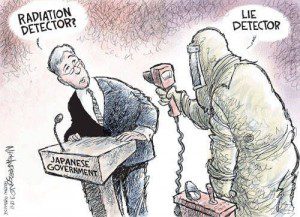 There are higher cancer rates with Boiling Water Reactors (BWR) of the type used at Fukushima. This is because of everyday “sanctioned” radiation emissions or discharges from NPPs operating well within emergency limits. In other words, the higher rates of cancer have been caused by radiation discharges that are allowed to occur.
There are higher cancer rates with Boiling Water Reactors (BWR) of the type used at Fukushima. This is because of everyday “sanctioned” radiation emissions or discharges from NPPs operating well within emergency limits. In other words, the higher rates of cancer have been caused by radiation discharges that are allowed to occur.
Human Cancer Caused by NPPs in Meltdown
Reports from the Chernobyl radiological disaster provide a bleak and chilling account of what may be the future for Japan after its NPP meltdown.
The Chernobyl NPP meltdown began on April 26, 1986, when reactor 4 exploded, creating a radioactive plume that extended across Europe and was later recorded in the United States. This catastrophe happened near the end of the Soviet-era in Russia and, for many years, the true extent and effects of the disaster were hidden. Even today, the global community, which is usually most generous in pouring out aid to a stricken community, has been slow to understand the scope of this disaster.
According to a report by Prof Rosalie Bertell MD, the first serious concerns were only aired in 1999:
In 1991 there was widespread concern in Ukraine about 150,000 people, including 60,000 children exposed to high levels of radiation to the thyroid gland [2000 mSv for children and 5000 mSv for adults]. This problem was not discussed or admitted internationally until the release of a paper in 1999 by the British Journal Nature and the World Health Organization [WHO] call for help to aid child thyroid cancer victims.
Chernobyl: 25 Years On
It took over 12 years for the international community to report and acknowledge the catastrophic radiation effects on humans resulting from Chernobyl.
As early as 1990, Dr Keith F. Baverstock, head of the department for radiation and health at the European office of the WHO, visited the Gomel Region of Belarus, which had received significant fall-out from Chernobyl. He noted the dramatic increase in thyroid cancer especially in very young children. Even in major European or American cities, one rarely saw more than 1 or 2 cases per year, yet during his visit to a hospital in Minsk he saw 11 such cases in one day.
Radiation does not only cause cancer, it also destroys healthy lives in other ways, writes Baverstock:
Children exposed to Chernobyl fallout were experiencing chronic adult diseases of the respiratory and blood systems, gastritis, nervous system diseases, cardiovascular diseases and other diseases of internal organs. In general, in 1991, the level of serious illness in children was about 6 to 7 times above normal.
Fukushima: Significant Increases in Human Cancer Rates
In a 2012 report by Russia Today, the Sixth Report of Fukushima Prefecture Health Management Survey, tells of a shock rise in young children at risk of thyroid cancer:
The shocking new report shows that nearly 36 per cent of children in the nuclear disaster-affected Fukushima Prefecture have abnormal thyroid growths. This is an extremely large number of abnormalities – some of which, experts say, pose a risk of becoming cancerous.After examining more than 38,000 children from the area, medics found that more than 13,000 have cysts or nodules as large as 5 mms on their thyroids, the Sixth Report of Fukushima Prefecture Health Management Survey states.
In comparison, a 2001 analysis by the Japan Thyroid Association found that fully zero per cent of children in the city of Nagasaki, which suffered a nuclear attack in August of 1945, had nodules, and only 0.8 per cent had cysts on their thyroids, reports the Telegraph.
Dr Helen Caldicott, one of many outraged doctors, says that results like these are not being properly scrutinized, publicised or acted upon:
The data should be made available. And they should be consulting with international experts ASAP. And the lesions on the ultrasounds should all be biopsied, and they’re not being biopsied. And if they’re not being biopsied, then that’s ultimately medical irresponsibility. Because, if some of these children have cancer and they’re not treated, they’re going to die.
According to a 20 August 2013 report by the website Fukushima Voice, there have been 18 confirmed thyroid cancer cases at Fukushima. Post-operative pathology results confirmed papillary cancer in 18 children, with another 25 suspected and awaiting surgery.
Fukushima: the Last Wave
Further evidence of cancer deaths was confirmed in an ABC report by foreign correspondent Mark Willacy in July 2013 [emphasis added]:
The former boss of Japan’s Fukushima nuclear plant, who stayed at his post to try to tame runaway reactors after the 2011 tsunami, has died of cancer, the operator [TEPCO] said. In the public mind, Masao Yoshida’s selfless work is contrasted with the attitude of his employers, who seemed willing to abandon the complex and are popularly believed to have shirked their responsibility.
He died of oesophagal cancer at 11:32am today at a Tokyo hospital,” said a spokesman for plant operator Tokyo Electric Power (TEPCO). Mr Yoshida left the plant soon after being suddenly hospitalised in late November 2011. TEPCO has said his cancer was unlikely to be linked to radiation exposure in the months after the disaster.
The Politics of Nuclear Accidents
It is beyond belief that politics and political correctness would have any place in masking or withholding help to humans after nuclear accidents and meltdowns. Yet, reports by Rosalie Bertell and others prove this beyond reasonable doubt.
Chernobyl – 1989
The International Atomic Energy Agency (IAEA) (page 42 of the report) was invited to review the impacts of the Chernobyl disaster. As Dr Bartell writes, they found there were no health problems able to be linked from Chernobyl:
In 1991 the IAEA reported that no health problems in the victims of Chernobyl could be linked to radiation! This 1991 report on health was chaired by Professor Fred Mettler, Jr., Director of the Medical Expert Group of the IAEA International Chernobyl Project. Dr. Mettler, Jr., MD, was Chair of the Department of Radiology, at the University of New Mexico, School of Medicine, Albuquerque, NM, USA.
Chernobyl — 1990
Dr. Baverstock reports to the British journal Nature about the WHO validating research done in Belarus and Ukraine, documenting a 30 fold increase in thyroid cancer in radiation victims, completely discrediting the IAEA report of Dr. Fred Mettler Jr.
Despite this, Dr. Mettler Jr secured a position with the International Commission on Radiological Protection (ICRP). He was also chosen as the U.S. representative on the United Nations Scientific Committee on the Effects of Atomic Radiation (UNSCEAR). This does explain the strange silence and cover-up of the negligence acts where nothing was done to assist those exposed to the Chernobyl fallout. It also illustrates that only those “experts” who comply with the official line will be given rewards.
This chicanery continues to this day.
Medical Experts Criticize UNSCEAR Reports for Playing Down Consequences of Fukushima Nuclear Disaster
Bertell further explains that the ICRP has since broken its tie to the International Society of Radiology, and is now considered a self-appointed and self-perpetuating non-governmental organization of physicists, medical regulators of nuclear nations, radiologists and others who use radiation in their work. A person becomes a “member” of the ICRP by being proposed by a present member and accepted by the executive committee. No professional society, or even the WHO, can put a person on the ICRP main Commission.
When faced with recommending radiation protection standards, the newly formed IAEA turned to the ICRP rather than WHO for advice. No one seems to have questioned the selection of fatal cancer and serious genetic disease in live born offspring as inappropriately limited concerns for a major radiological disaster.
Imagine only being concerned about the deaths after the Seveso dioxin crisis, the Bhopal Union Carbide disaster, the Asian tsunami or the Katrina hurricane! This restriction was clearly inappropriate for thyroid cancer in the Chernobyl fallout area. According to the International Commission on Radiological Protection, only about 5% of thyroid cancers are fatal.
This type of nuclear politics continues and thrives to this day.
Expert Statements About Radiation Risks
Fukushima – 2012
There are claims that Fukushima radiation leaks are much less than those of Chernobyl. For instance, an article by Eric Niiler on the website Live Science, states:
Experts in the U.S. say the amount of radiation that spewed from the crippled reactors was about 10 percent of what was released at the Chernobyl disaster in 1986. Still, they caution that the long-term health effects on both residents and workers are still mostly uncertain.
Niiler also includes comments from Associated Press [AP], who also report that:
In Fukushima and nearby areas, outside the 20-kilometer evacuation zone, the annual exposure is 20 millisieverts in some places and as high as 50 in others, according to AP. Fifty millisieverts (or 5 REMs) is equivalent to the yearly occupational exposure limit for nuclear workers.
“It’s a low dose,” said Lewis Pepper, an occupational health physician at the Queens College of New York.
Fukushima – 2013
Reports about the low levels of radiation ejected via air or seawater appear to be supported by the UN World Health Organization (WHO). According to the website World Nuclear News [emphasis added]:
In January, the World Health Organization (WHO) said that there is only a low risk to Japan’s population due to radioactivity released by the Fukushima accident. For the general population in wider Fukushima prefecture, across Japan and beyond, “the predicted risks are low and no observable increases in cancer rates above baseline rates are anticipated,” WHO said.
This research, headed by Professor Ryugo Hayano of the University of Tokyo, studied the results of whole body scans carried out at Hirata Central Hospital in Fukushima prefecture between October 2011 and November 2012. They further state that their research discovered:
Some 99% of residents of Fukushima prefecture and neighbouring Ibaraki have barely detectable levels of internal exposure to caesium-137, a group of Japanese researchers has found.
Of the remaining 1%, all showed levels well below the government-set limit.
The Fukushima Daiichi Disaster in Comparison to Chernobyl
Research provided by nuclear engineer Arnie Gundersen, Prof. Kaku, Prof. Busby [part 1], Dr. Caldicott and others completely refute the above findings.
We now know that Soviet & International Officialdom minimised the 1986 Chernobyl catastrophe.
In a letter published in a British science journal, Dr. Vasily S. Kazakov of the Belarus Ministry of Health in Minsk and his colleagues say that the thyroid cancer rates in the region’s most heavily irradiated began to soar in 1990.
In Gomel, the most contaminated region studied, there used to be just one or two cases of thyroid children a year. But Kazakov and his colleagues found that there were 38 cases in 1991. In six regions of Belarus and the city of Minsk, the investigators found 131 cases of thyroid cancer in young children, some of whom were still in the womb when the Chernobyl accident occurred.
Yet, despite such conclusive evidence, the Japanese government and radiation lobbyists continue with this Chernobyl-style ‘cover-up agenda’ at Fukushima to this day.
The Japanese and International Officialdom focus is to promote a ‘business-as-usual’ approach, as evidenced by them securing the 2020 Olympic Games for Tokyo.
TEPCO plans to decommission of the six Fukushima NPP reactors remove the tonnes of damaged spent fuel rods from the four leaking repositories, a hugely dangerous task that Arnie Gundersen says is beyond their expertise. We conclude this report by examining these plans and the dangers they pose to the Japanese people and, indeed, the world.
This work is licensed under a Creative Commons Attribution-NonCommercial-NoDerivs 3.0 Australia License
About the author:
Graham Bates commenced his military service in Darwin, where he graduated from the Officer Cadet Training Unit [OCTU] as a General Service Officer [Lieutenant] in the General Reserve [GRES] in 1990. A graduate of the School of Military Intelligence, he worked as an Intelligence Officer [IO] with a special interest in Infrastructure, working for both NORFORCE and later 7 INT COY, an Intelligence asset of Northern Command [NORCOM].
Following successful completion of training courses at the Reserve Command and Staff College [RCSC], Graham was promoted to CAPT in 1996. Due to civilian commitments, Graham transferred to the Royal Australian Medical Corps [RAAMC] in 2000, and is currently officially inactive. He was awarded the Australian Defence Medal [ADM] in 2010 for his service to the ADF.
In recent years Graham has achieved a post-graduate in Health Scientist [Medical Imaging]. Now a resident of the Sunshine Coast in QLD, he maintains a focus on analysis, infrastructure & national issues.
[pro_ad_display_adzone id=”110027″]

